Expansive - The Never Before Seen (at least by me)
“Will you seek to serve the people with energy, intelligence, imagination, and love?”
That’s one of the questions that I responded to when I was ordained as a pastor in the PCUSA. The same question is also asked of elders and deacons when they are ordained to service. I adore this question especially because of the third word at the end...imagination.
One of the things about imagination for me is about being open to the never-seen-before. Whether that is being envisioned in ones own imagination or simply being open to what might come, imagination is open to the expansive - that there might be something out there that hasn’t been experienced or seen before. It isn’t about going back to some imagined time when “things were better” but knowing that something new might be around the corner and trying to help that come to life. In the two church traditions I have been a part in the last two congregations I have served, both have this sense - in the UCC it is that “God is still speaking” and in the PCUSA it is that it is “once reformed, always reforming according to the Word of God and the call of the Spirit.” The UCC one is a bit simpler and catchier, in my opinion.
This morning poet and author
shared a snippet of a poem by RS Thomas that spoke to imagination and connected personally with me and the space that I find myself in right now. Here’s his post:Not hankering after an imagined past but being open to a new eternity that awaits ...imagination... expansiveness
I am in a season right now of imagining something new. At the end of June, I transitioned into a new ministry setting where I am the organizing pastor of a new PCUSA congregation. This new community is being born out of three congregations who sought to enter into something new rather than just trying to keep doing the same and expecting different results. These three congregations each took a bold step and each are making major sacrifices in order to embrace a new future. They are setting aside simply what speaks to them personally to be open to God doing a new thing. Over the last two months, we have been doing a ton of work to prepare for when the first official Sunday would come. That Sunday is today, September 7 when ResoundingJoy Church will have its first “official” Sunday morning together.
We are still imaginging and learning what we will be as a community of faith but imagination and possibility and expansiveness have to be at the heart of what we will become. One of my first messages to the church and something we have continued to share over and over is that JOY for us is not simply talking about an emotion but it speaks to centering on Jesus (J), being open to the still-speaking Spirit (O), and saying “Yes, and” to God’s call (Y)...JOY... expansive and imagination are at the heart of all of those. I’m excited for what will come!
In addition to both the poem above and the work we did today at the church to get things ready for the morning, there have been several other reminders of this sense of seeing things that haven’t been seen before (at least by me).
The lake where Scout and I often walk is currently being drained to be able to inspect the dam and there all kinds of things being revealed. There were these two rails just poking out of the water and then a bench that was pushed (?) into the lake at one point

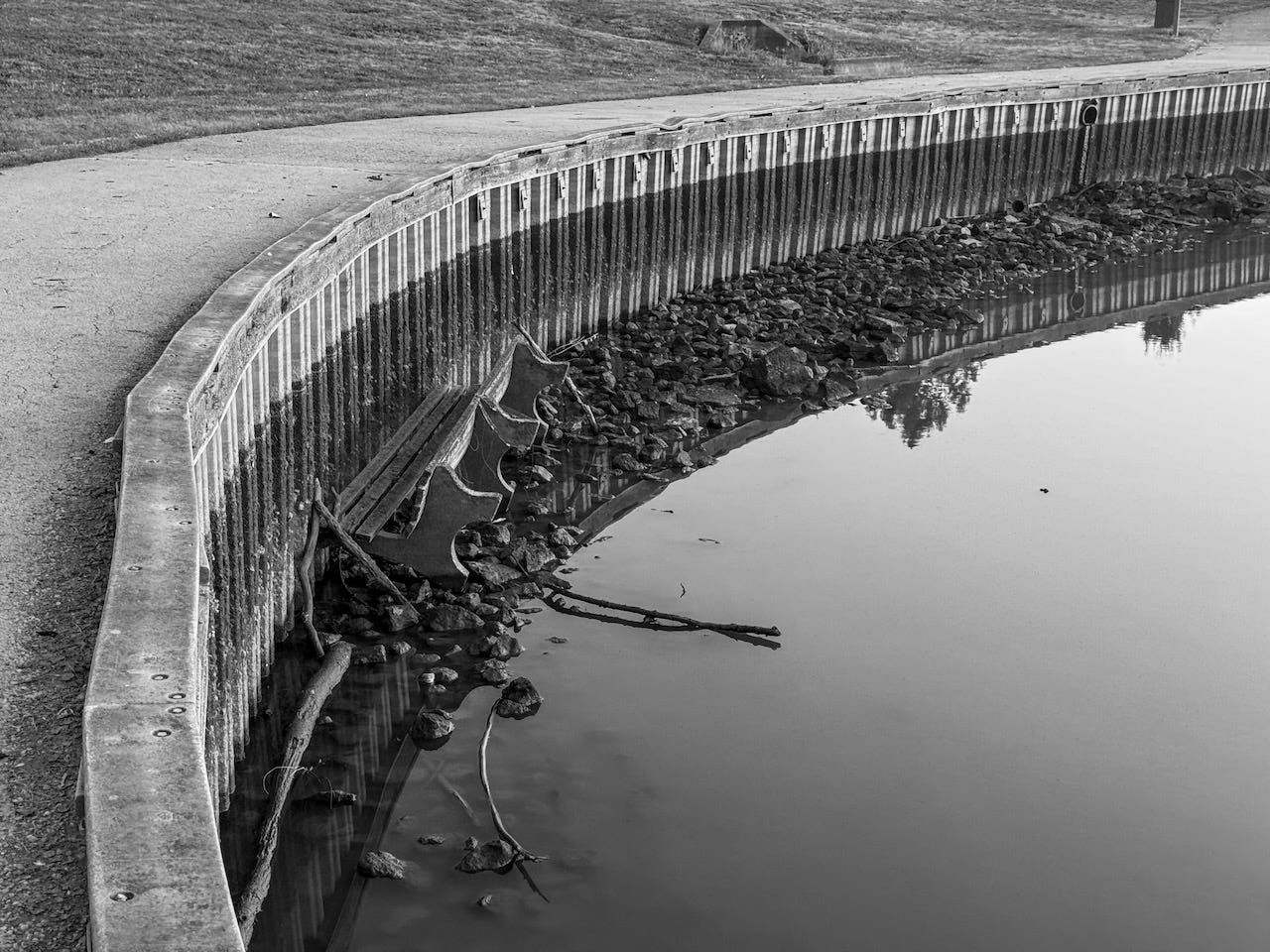
There’s all kinds of things around the lake that are showing up in new ways. It is fascinating to see it all. I am, however, looking forward to seeing the lake back up to normal levels again.
And the herons have been both photogenic and surprising. These herons were right in the middle of beautiful reflections of color.
And then this one on Saturday morning (same Saturday as the poem and the work at the church). This heron wasn’t out on the water or really even close to it. It was just standing in a field. In all of my walks around this lake I have never seen a heron here before.
Finally...a Psalm. I mentioned a few posts ago about the First Nations Psalms and Proverbs which I am slowly reading my way through. Today I came to Psalm 27 which is one of the most encouraging Psalms of all of them. It starts out in the “traditional” version as “The Lord is my light and salvation, of whom shall I fear?...” Here’s the First Nations version of verse 1 and then verse 4:
Grandfather is my light, the One Who Sets Me Free. Who should I fear? My life is kept safe as Grandfather watches over me. I am not afraid....One thing I ask of Grandfather, one thing I long for, to dwell in his longhouse all my days, to gaze on his beauty in the sacred lodge and humbly seek to know his ways1.
Yes these are different words and a different way of expressing the Psalm. But I love hearing these words in new ways and opening me to new possibilities of understanding and experiencing.
Expansive... The Never Before (at least by me...)
And Scout...She and I were awarded medals for completing the Great Sniffari Challenge from an online “race.” We completed the 26 miles of the challenge (not all in one go) and we each got our medals!
Grace, Peace, Love, Hope, and Joy,
Ed
Wildman, Terry M.. First Nations Version Psalms and Proverbs: An Indigenous Bible Translation (p. 22). Kindle Edition




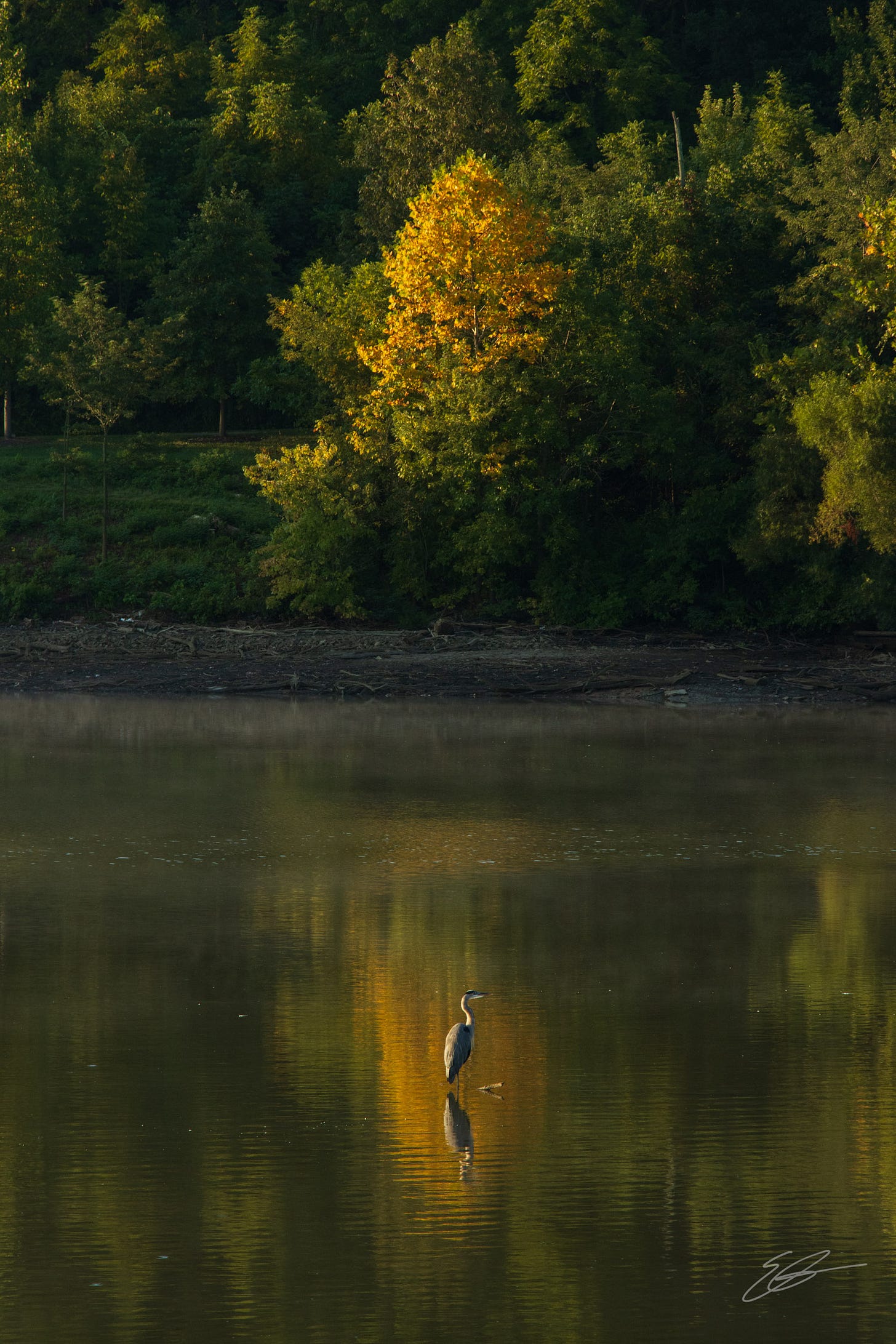
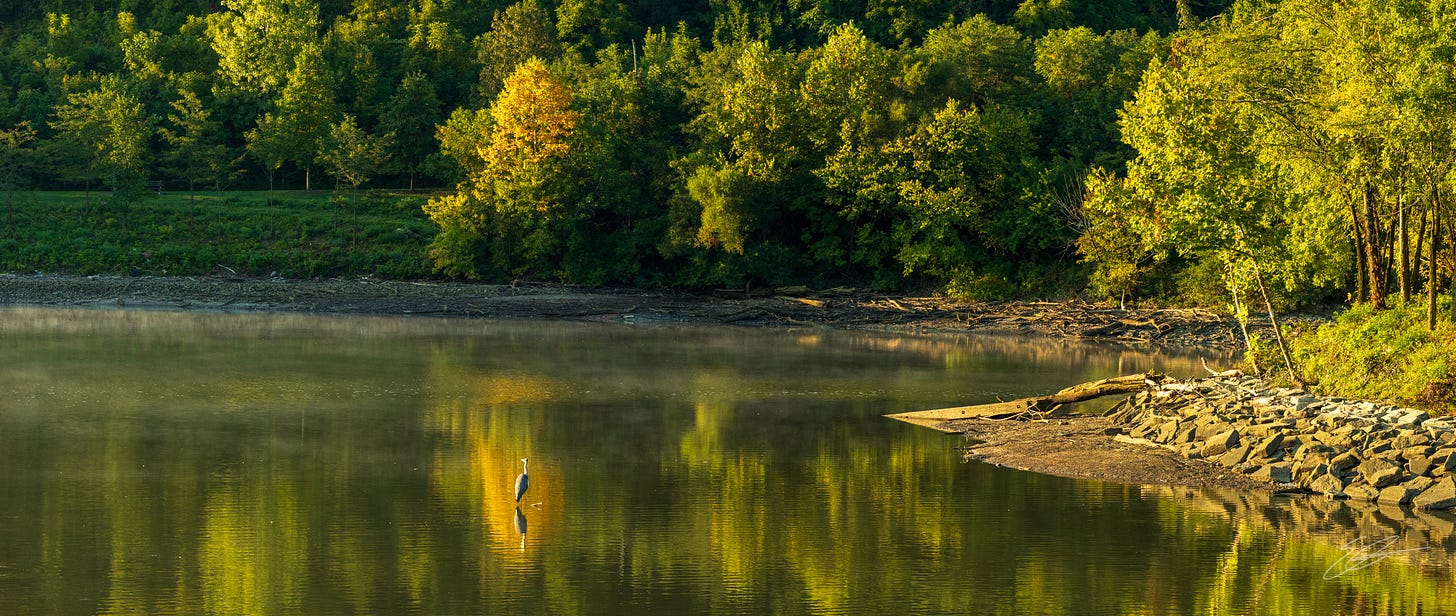
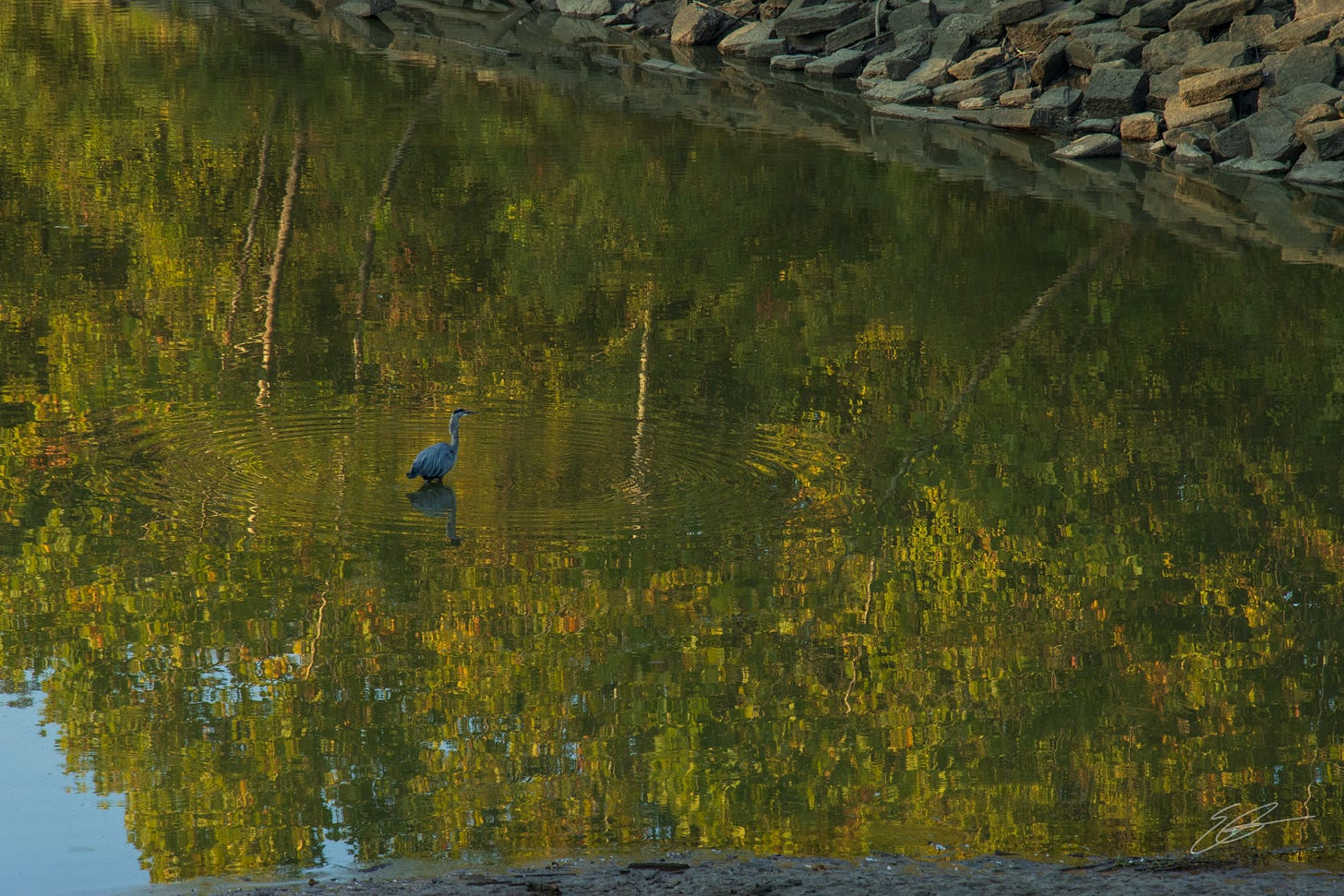
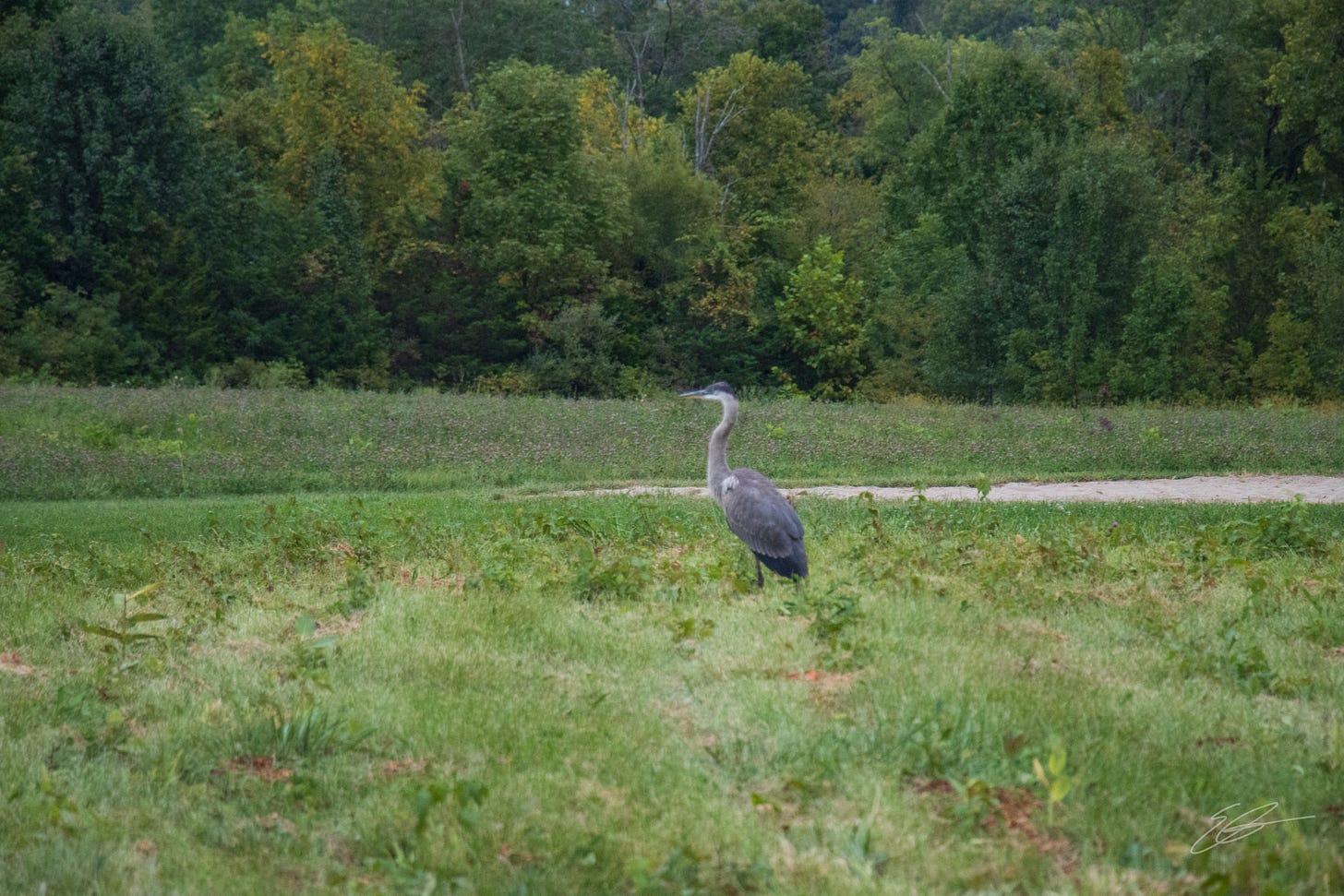
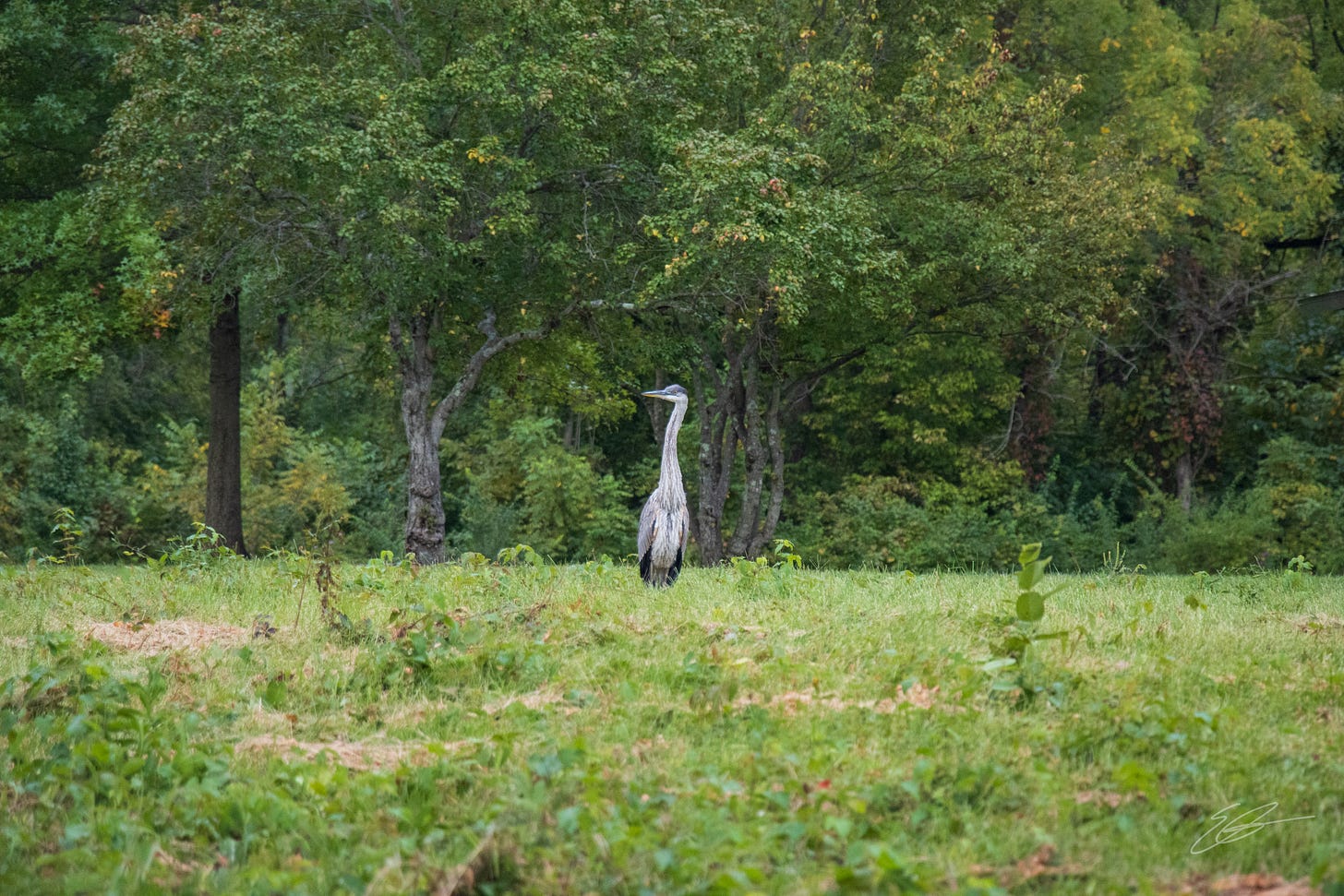

Thank you so much for the imagination to recast JOY as a more life-giving acronym than Jesus first, Others second, Yourself last. Hate it hate it hate it.
I recently moved from an area surrounded by lakes with many herons. I too had never seen them on dry land. So, after reading your message I had to google and AI provided the info I’ve pasted below.
A God wink (maybe?! - I’m thinking yes) as you have been in this new season of adaptability and changing environment with the creation of Resounding Joy Church. Nature so often speaks to us, if we listen. Wishing you and your new congregation much Joy as you create a new space, a new environment, for sharing God’s love. 🩷🙏🏼
Herons visit fields to hunt for food such as voles, mice, frogs, large insects, and sometimes other small birds, in addition to their primary diet of fish. This behavior is a sign of their adaptability, allowing them to thrive in varied habitats beyond just water, with species like the Great Blue Heron commonly foraging in grasslands and agricultural fields across the U.S.
Why Herons Go to Fields
Food Sources:
While herons are known for hunting in water, they are opportunistic predators and will venture into fields to hunt for small mammals like voles and mice, as well as other prey like frogs and large insects.
Adaptability:
Herons are highly adaptable birds that can adjust their foraging strategies to different environments. This ability allows them to exploit food sources in various habitats, including the open grasslands of fields.